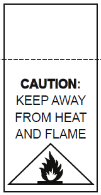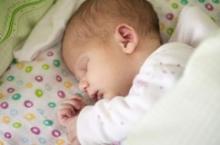The mandatory standard prescribes requirements for safety testing and labelling of children's nightwear and paper patterns for making children's nightwear.
About the standard
The mandatory standard applies to nightwear for children (sizes 00–14 unless stated otherwise) that includes the following items:
- Pyjamas (whether sold as top and bottom together or nightwear separates)
- Size 3 - 14 knitted nightwear all-in-ones
- Size 00 - 14 woven nightwear all-in-ones
- Predominantly knitted all-in-one garments in the size range size 00-2 made from fabrics that have a pile or nap, or include fabrics with a pile or nap
- Nightdresses and nighties
- Nightshirts
- Dressing gowns
- Bathrobes
- Boxer shorts of a loose style commonly used as nightwear
- Infant sleep bags with sleeves or arm openings
- Blankets & towels that incorporate a sleeve or arm opening
The mandatory standard also covers paper patterns for making children's nightwear. The mandatory standard prescribes requirements for safety testing and labelling of children's nightwear and paper patterns for making children's nightwear.
Exclusions
The mandatory standard excludes the following type of garments:
- Knitted all-in-one garments up to and including size 2 that are not made from fabrics that have a pile or nap, & do not include fabrics with a pile or nap
- Woven all-in-ones for daywear
- Knitted trunks or boxer shorts in form fitting styles commonly worn as underwear
- Tee-shirts, singlets, track tops and similar where they are not sold as nightwear and are not a component of a nightwear set
- Towels and blankets that do not incorporate a sleeve or arm opening
- Headwear, footwear & hand-wear
- Infant sleep bags without sleeves or arm openings
- Sleeping bags in all sizes, as typically used for camping
- Baby wraps and swaddles
- Detachable capes, hoods, wings, tutus & similar costume accessories
Mandatory standard
The Consumer Goods (Children’s Nightwear and Limited Daywear and Paper Patterns for Children’s Nightwear) Safety Standard 2017 sets out the mandatory requirements for children's nightwear.
The mandatory standard is based on the voluntary standard Australian and New Zealand Standard, AS/NZS 1249:2014, Children's nightwear and limited daywear having reduced fire hazard. AS/NZS 1249:2014 is available from SAI Global.
Key requirements
These requirements aim to provide an overview of the mandatory standard. Suppliers must not rely on this information as a complete guide to compliance.
Safety categories
Nightwear for children (and some daywear) is classified into one of four categories, according to garment or fabric type.
Some garments are so flammable they cannot meet any of the four categories, so cannot be given a label and must not be sold.
Labelling
Each category requires a label. Categories 1–3 require a low fire hazard label and category 4 requires a high fire hazard warning label.
Low fire hazard label

High fire hazard label

Category 1
Garments made from fabric and trims that pass low flammability tests. Examples include wool, some synthetics and some heavy cottons.
Category 2
Garments that are close fitting, such as pyjamas, do not ignite or burn as readily. As a result, they may be made from more flammable fabrics. Garment measurements apply according to size.
Category 3
Babies' all-in-ones have their own category because there is little difference between daywear and nightwear. This category covers all-in-one garments in sizes 00–2, such as jumpsuits and rompers. It applies to garments made mostly from knitted fabrics and where the close-fitting portion of the garment occupies 80% or more of the total surface area of the garment.
Category 4
Applies to garments that do not fit categories 1, 2 or 3 but still meet some fabric, size and burning test requirements.
Testing
The mandatory standard specifies testing to ensure that nightwear for children meet requirements for fire hazards. Suppliers need to organise this testing through specialist laboratories.
Testing requirements include:
-
Fabric type: The type of fabric used in nightwear garments for children may require testing to establish the appropriate fire hazard category.
-
Fabric trims: Fabric trims need to meet certain requirements under the different fire hazard categories.
Safety markings for paper patterns
Labelling
The envelope of the paper pattern must have a clear and legible warning about the flammability of some fabrics and nightwear styles.
The standard sets out specifications for the label typeface including the words 'FIRE WARNING' to appear in bold, uppercase lettering.
More information is available in the Explanatory Statement available on the Federal Register of Legislation website.
Translations
Bengali | বাংলা - Nightwear for children - Australian mandatory safety standards ( PDF 503.03 KB )
Chinese simplified | 简体中文 - Nightwear for children - Australian mandatory safety standards ( PDF 353.95 KB )
Chinese traditional | 繁體中文 - Nightwear for children - Australian mandatory safety standards ( PDF 341.34 KB )
Hindi | हिन्दी - Nightwear for children - Australian mandatory safety standards ( PDF 419.89 KB )
Japanese | 日本語 - Nightwear for children - Australian mandatory safety standards ( PDF 283.7 KB )




